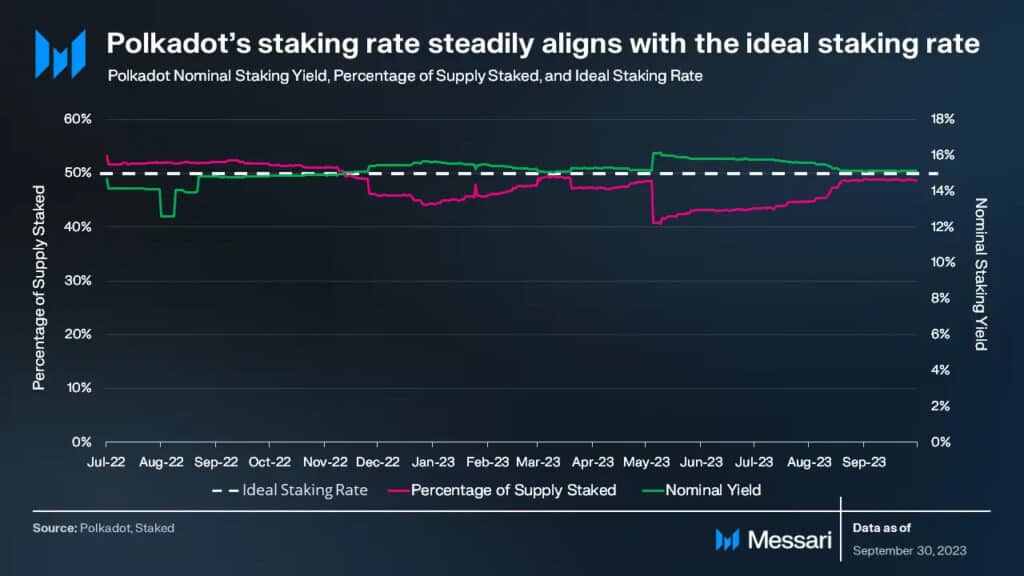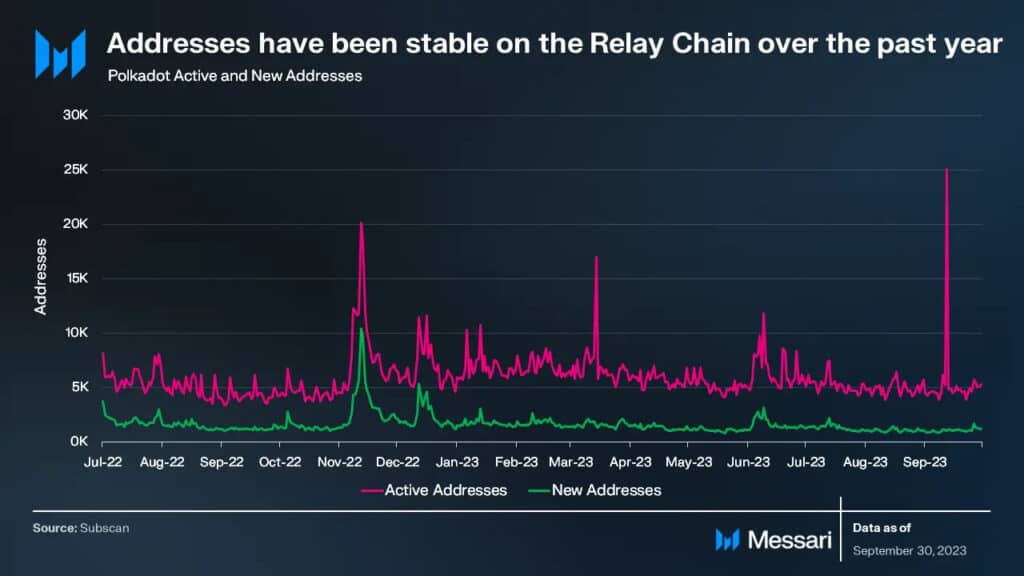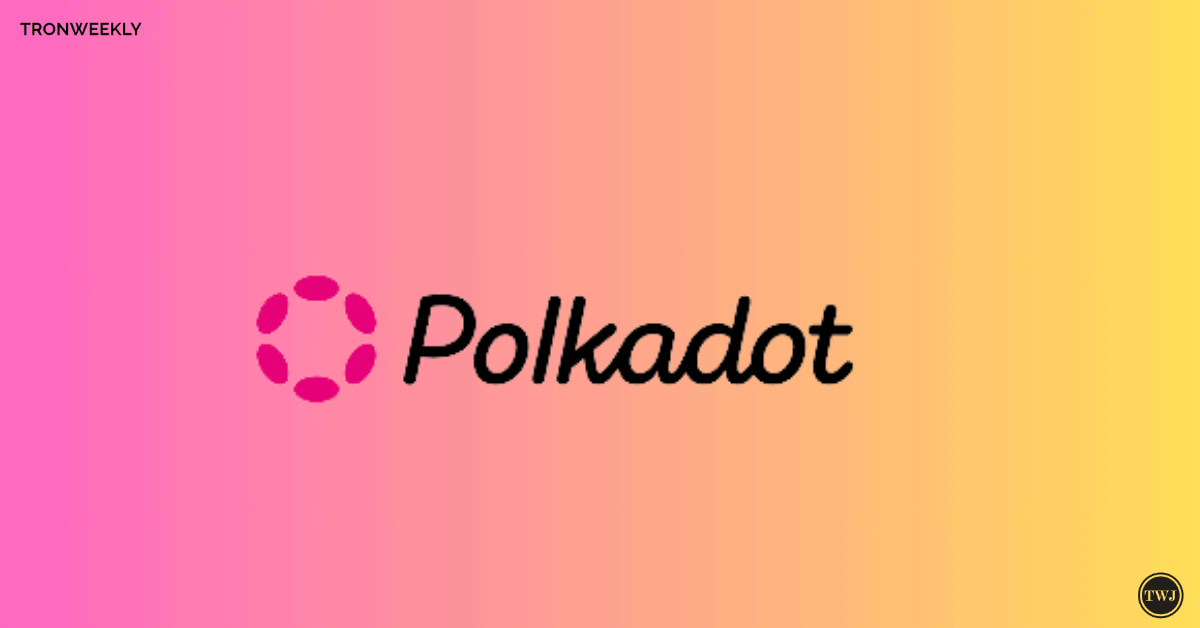In Q3’23, Polkadot showcased a remarkable performance with significant developments that are reshaping the landscape of decentralized networks. The completion of Polkadot 1.0, a long-anticipated milestone, was met with enthusiasm, marking the realization of the Polkadot whitepaper. Looking forward, the community is eagerly awaiting Polkadot 2.0, which is expected to take shape through community discussions and consensus.
Polkadot’s Q3’23 Performance
The quarter brought forth a 12% QoQ increase in DOT staked, underlining the effectiveness of Polkadot’s staking mechanism. Notable integrations included Wormhole’s routed liquidity via Moonbeam and the launch of Native USDC on Polkadot’s Asset Hub, further expanding access to liquidity across the ecosystem.
Financially, Polkadot operates under a unique weight-based fee model, distinguishing it from the common gas-metering model. Despite a 3% QoQ decrease in revenue to $94,000, Polkadot’s revenue remains relatively lower compared to its competitors due to its structural design.

Polkadot’s native token, DOT, experienced a 12% QoQ increase in staking, aligning closely with the ideal rate, which reflects the effectiveness of its mechanism. This adjustment led to reduced staking rewards and a 12% QoQ decline in annualized nominal yield to 15%. Zodia Custody’s announcement of institutional custody and staking services on Polkadot added to the network’s credibility.
The network’s treasury, financed through various means, supported initiatives in Q3, including software development, bounties, client upgrades, and community events. The introduction of OpenGov is set to revolutionize treasury management, delivering substantial benefits to the Polkadot community. As of the quarter’s end, the treasury held approximately $185 million.
In terms of network analysis, Polkadot’s Relay Chain witnessed increased account activity attributed to heightened governance processes. The network experienced an average of 5,200 daily active accounts, contributing to 4,312,113 million unique accounts across the Polkadot ecosystem by the end of September, marking a notable 9.3% QoQ and 34.9% year-to-date increase.

Polkadot’s developer ecosystem continues to thrive, boasting nearly 2,000 monthly active developers in Q3, making it the second-largest ecosystem by developer count. Various developer support categories further solidify Polkadot’s position in the crypto industry, with initiatives like the Polkadot Developer Heroes Program and the Polkadot Blockchain Academy adding to its appeal.
Looking ahead, Polkadot’s roadmap is shaping up, with Polkadot 2.0 discussions taking center stage. The network’s ecosystem, characterized by XCM, parachains, and various integrations, continues to grow, offering a promising future for the Polkadot community.
Related Reading | SEC Faces Uncertainty In Ongoing Ripple Battle Following Second Circuit Ruling

